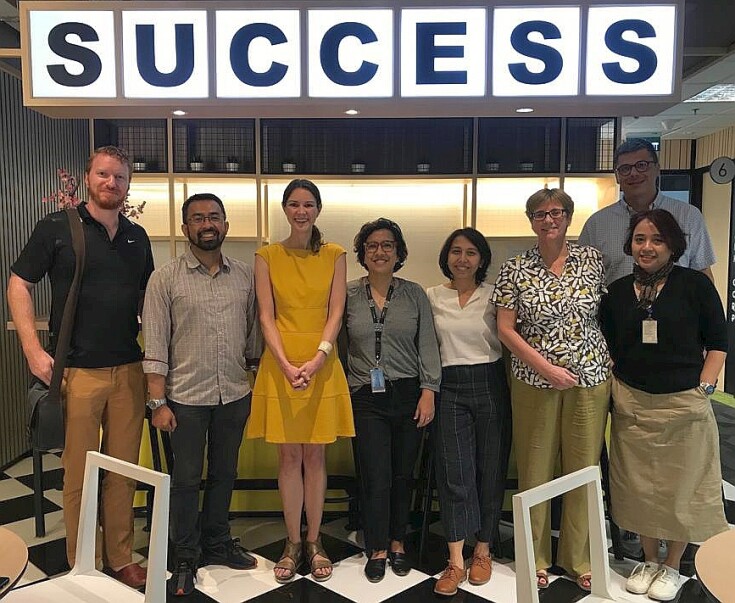With digital advertising failing to provide the revenues many media companies need to sustain their news operations, outlets around the world are looking for additional or alternative sources of income on which to build a viable business.
One of the most attractive models for digital outlets to explore is membership, which in addition to potential revenue opportunities may offer as a by-product a productive exchange of knowledge with members. Membership goes beyond a simple transactional relationship of, say, a subscriber paying for services, and instead seeks to build a much deeper two-way relationship between the media organisation and its readers, listeners or viewers.
A successful membership program is built on an engaged audience community nurtured by the outlet and underpinned by trust. Inspired by the research efforts of the Membership Puzzle Project and successful membership and partnership projects launched by organisations such as The Guardian and Spain’s elDiario.es, the hope is that this relationship may lead to a new source of revenue that isn’t dependent on the vagaries of the online ad market and algorithms of the tech giants. The varied membership and reader support models are also able to leverage this type of reader rapport and “audience-listening” for further community and editorial insights.
Several MDIF clients are currently considering launching membership programs but, with models still evolving and little experience to draw on in their local markets, there is much to learn. To help clients design a strategy tailored to their own company’s region/audience needs and construct a practical schedule for implementation, as well as avoid potential pitfalls, MDIF’s technical assistance unit Media Advisory Services (MAS) sought external specialist assistance.
Procedures, plans and principles
MAS engaged Emily Goligoski, Senior Director of Audience Research at The Atlantic and former Research Director for the Membership Puzzle Project, to work with seven client companies, helping them to assess their membership and subscription options and evaluate their strategic needs in audience engagement.
Each client took part in a full-day workshop that had been custom designed through a series of calls, pre-training document exchanges and tailored assignments. The workshops included an organizational overview, examples of best practices and membership principles from independent sites, and a deep-dive into each media’s needs of a revenue and engagement program, as well as team planning for a project development plan.
Working with media managers and journalists from digital media in countries including Indonesia, Serbia, Guatemala and Ecuador, Emily helped clients to think through the full implications of developing an overall reader support program strategy. She worked with each client to assess its specific audience, region and content focus, and understand the core principles required to build a detailed road-map, from launch through roll-out. The comprehensive preparation helped media managers identify the resources they would need and anticipate the challenges they would face in the different phases of a membership-driven implementation.
Audience research is vital, and participants were encouraged to begin by listening to their audiences in range of ways, including SEO, direct messages, newsletters and calls to action, and to increase their understanding further by using surveys and focus groups. This kind of interaction will allow the media organisation to find out information that is critical to the design and prospects of a membership program, such as how potential members perceive the brand, what they would expect from membership, what expertise they are willing to share and how much they would be willing to pay. Combining this in-depth community research with existing knowledge triggers a “membership program design process” in iterations.
Each client was taken through a tailored process of assessing its audience’s consumption habits and the public’s awareness of the brand, and how it could use its current positioning to extend the brand and foster a greater sense of community. Emily helped them identify key decision points and issues that can be overlooked, like how to communicate to ensure the program is transparent and how to interact with supporters. Clients took inspiration from examples of successful campaigns that have used a variety of approaches of interaction and potential revenue generation, like events and shared experiences, such as those by De Correspondent and Daily Maverick.
Preparation and continuous follow-up
Client companies also considered assembling and budgeting for the team – in terms of time, money and areas of expertise – aware that eagerness to launch a membership or subscription model can be undermined by a failure to map out proper procedures and protocols.
Specific focus was placed on deciding on and implementing a timeline, covering issues ranging from membership brand creation, campaign design/launch and setting one- to three- year membership program goals, to carrying out a cost analysis of reader support projections, responding to survey results and ongoing member relations – all of which will determine the success of the program and the return on investment.
Whatever type of membership model is adopted, continuous follow-up is integral to long-term success and Emily helped clients work through the important issues of maintaining a dialogue with members and the critical issue of supporter retention. Importantly, she also helped clients understand that membership is an approach that won’t be suitable for all sites and helped them come to a decision about whether it is the best way forward for their company.
As clients plan their next steps, we are confident that they are now able to make an informed decision about whether they want to pursue a membership future and, if so, what it should look like. MAS continues with phased post-visit work in areas including staffing, preparation, research, focus and surveys, implementation, program design and testing. We hope to accompany several through to the successful roll out of a new business model.
